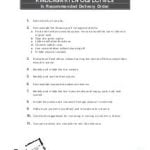Tips on Using Drama with Pre-K and Kindergarten
$4.00Add to cart
 Working with children in the pre-K and Kindergarten age requires special skills. Managing the classroom with active, developing children can be a challenge, but employing drama skills to assist can make things easier--and we can show you how. In our blog, we discussed using drama as a classroom management strategy and group work with young students. In this download, we focus on our 18 tips and suggestions learned through teaching drama to pre-kindergarten and kindergarten children throughout the world.
Working with children in the pre-K and Kindergarten age requires special skills. Managing the classroom with active, developing children can be a challenge, but employing drama skills to assist can make things easier--and we can show you how. In our blog, we discussed using drama as a classroom management strategy and group work with young students. In this download, we focus on our 18 tips and suggestions learned through teaching drama to pre-kindergarten and kindergarten children throughout the world.
Appropriate Practice in Pre K and Kindergarten
Art, music, movement, woodworking, drama, and dance are integrated throughout each day as relevant to the curriculum and as needed for children to express themselves aesthetically and physically and to express ideas and feelings. Specialists work with classroom teachers and children. Children explore and experiment with various art media, tools, and forms of music, drama, and dance.
Inappropriate Practice in Pre K and Kindergarten
Art and music are taught as separate subjects only once a week. Specialists do not coordinate closely with classroom teachers. Representational art, evaluated for approximations to reality is emphasized. Children are expected to follow specific directions resulting in identical projects. Crafts substitute for artistic expression.
Excerpted from NAECYS’s new expanded edition of Developmentally Appropriate Practice in Early Childhood Programs Serving children from Birth Through Age 8, edited by Sue Bredekamp.
A Few Final Thoughts to Remember
- Drama is in the room.
- Drama is in each student.
- Students are not sponges soaking up drama.
- Students are sponges and you are wringing drama out of them.
- Teachers are like soft background music. The music plays softly and makes you feel good; but you forget it’s on as you work.
Pre-K and Kindergarten Curriculum



Purchase or download individual lessons below This year-long planning guide maps a year of drama teaching. We put these lessons in a recommended delivery order below, but you may revise, ...



